Guizhou Provincial Museum
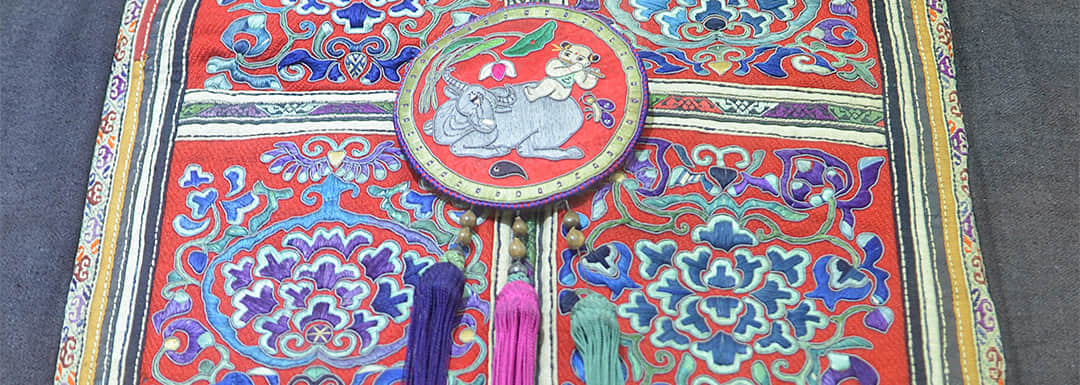
A provincial comprehensive museum in China, Guizhou Provincial Museum is located in East Lincheng Road, Guiyang. The construction started in 1953 and the museum opened in 1958. It covers an area of 7.1 ha and has a total construction area of 4.6 ha. More than 200,000 pieces of cultural relics and specimens are stored here. Ethnic cultural relics are one of the key collections of the museum, wherein there are more than 1,000 pieces of embroidery, wax printing, cross stitched pieces, brocade, and silver ornaments. Typical collections include Document Wood that keeps Miao marriages, Miao Goblets adorned with animal patterns, Lined Blouses with silver bells that are decorated with Miao nationality blue satin lace, a Dragon and Eight Diagrams Robe by hereditary headmen, various robes, the manuscript of Chronicles of Yi Nationality Ancestors manuscript, and bronze drums for Shui Sub-nationality Tombs (Dai Nationality).
- Chinese name: 贵州省博物馆 Guì zhōu shěng bó wù guǎn
- Estimated visit duration: 4-5 hours
- Ticket: free
- Address: No. 107, Lincheng East Road, 6Guanshanhu District, Guiyang
- Open hours: 9:00 – 17:00 (no entrance after 16:00), Tuesday to Sunday (open on public holidays)
- Best time to visit: all year round
- How to get there: Take Bus No. 48, No. 58, No. 208, No. 209, No. 263, No. 281 or Night No. 8 to get off at Guiyang Garrison Stop. Walk for another 300m to get there.
Highlights of the Museum
Collections
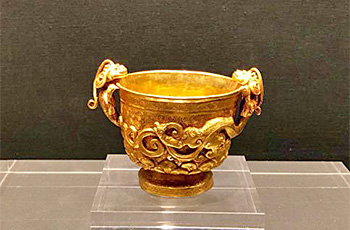
More than 200,000 pieces of cultural relics and specimens are stored here. Unearthed artifacts include the incisors and premolars of Dongzi pithecanthropus fossils, mandible and femur of the Xingyi Cavemen, skulls with the upper and lower jaws of Hole-piercing Men, fossils of extinct mammals and typical stone tools. In addition to that, weapons representative of the works of Yelang Bronze Culture such as Wuyige, Gefan, a bronze handled iron sword, a sword model, a bronze pot in a drum shape. Among the collections are the unearthed ‘ear cups’ (cups with ear-shaped handles) and lacquered rice bowls from the Western Han Dynasty Tombs in Guizhou (both with long inscriptions), the Shizhaishan Style Bronze Drum with patterns, Whale-shaped and cattle-head-shaped copper baths with hooks, bronze Calendar Dials, five-zhu weight tiger button musical instruments, drinking vessels with bronze handles, and grand bronze wagons.
Hard pottery that was made in the Wei and Jin Dynasties has long inscriptions on it and Wuyang Chuanshe Bier Iron Furnace has been reserved. In addition, one can see "Zunyi” Bronze Drums and the "Wan Liyi Unified Calendar" from the Ming Dynasty.
Renowned cultural relics include Emperor Xuanzong Kaiyuan Prayer Slip for the Dragon, Manual Great Prajna Paramita, Han Qixing's Letters, Ming Dynasty Private Banknotes, and Emperor Wanli’s Guizhou Blue and White Porcelain Pots.
Ethnic cultural relics are one of the key collections of the museum, wherein there are more than 1,000 pieces of embroidery, wax printing, cross stitched pieces, brocade, and silver ornaments. Typical collections include Document Wood that keeps Miao marriages, Miao Goblets adorned with animal patterns, a Lined Blouse with silver bells that are decorated with Miao nationality blue satin lace, a Dragon and Eight Diagrams Robe by hereditary headmen, various robes, the manuscript of Chronicles of Yi Nationality Ancestors manuscript, and bronze drums for Shui Sub-nationality Tombs (Dai Nationality).
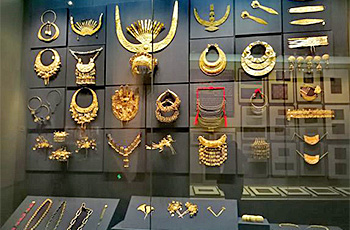
Modern time relics include Tenghuang used during the Uprising of the Taiping Heavenly Kingdom by General Zhu Mingyue who lead the Hao Army, the Miao Nationality Tiger (Pioneer) Army’s armor, Letter of Rejecting Surrendering by Hui Nationality Army leaders Zhang Lingxiang and Ma Hetu (recorded by the army of Qing Dynasty); the first notice issued by the Guizhou Provisional Government of the Xinhai Revolution of 1911 – The Order of the Taihan Military Government of Guizhou; the Red Army’s Resolution for the first meeting of the Soviet Workers, Peasants and Soldiers in the Qiandong Special Zone and the Notice by Administration Department. The printing machine and flyers by the Red Army are also exhibited.
Prehistoric cultural relics specimens: Keichousaurus fossils, Thalattosaurs fossils, Ichthyosaur fossils and Crinoidea fossils. A large number of megatapirus (giant tapir) fossils unearthed from Urban Station Street of Qingzhen Town, Guizhou Province, as confirmed by provincial museum experts, is the most complete skull fossil of South China. Deer fossils unearthed in the same batch are also valuable.
Drop us a line and we'll connect you with the top China expert in no time!
 6 Days Guizhou Karst Landscape Tour
6 Days Guizhou Karst Landscape Tour  6-Day Guizhou Miao Cultures and Mount Fanjing Tour
6-Day Guizhou Miao Cultures and Mount Fanjing Tour 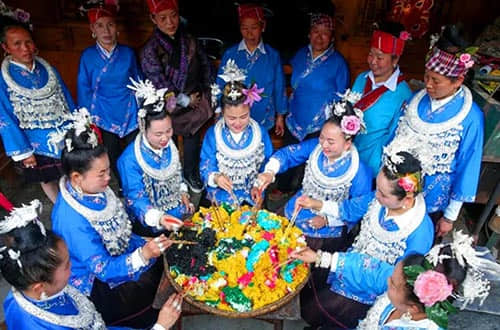 Sisters’ Meal Festival Tour
Sisters’ Meal Festival Tour 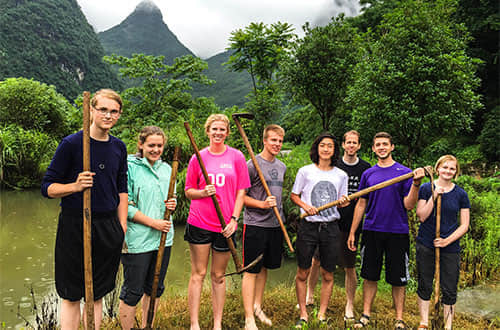 Community Service in an Ethnic Minority Village
Community Service in an Ethnic Minority Village